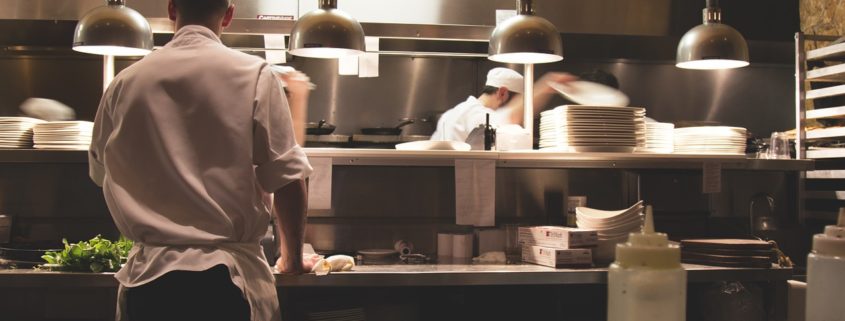Kitchen Design Trends from Miami Beach Restaurant Group
These days, open kitchens have become commonplace in restaurants: at their best, a wonderful draw that allows customers to peek behind the curtain and watch the very food they’re enjoying being prepared by skillful culinary artisans. Depending on the establishment, however, this trend may or may not be the best choice. Here are a few considerations on the potential pluses and minuses of the open kitchen!
Reassuring Your Customers
One idea of the open kitchen is to allow your patrons to see just how clean and sanitary your operations are, demonstrating you have “nothing to hide.” It’s certainly a great way to show off your high standards for hygiene and encourage diners to order with confidence.
Open Kitchen Possibilities
There are many ways to incorporate a fully or partly open kitchen within the scheme of your restaurant: from a diner/sushi-bar-style counter facing the kitchen to a middle-of-the-restaurant hearth hub. It can be a great excuse for exercising your creativity in the design department.
Kitchen Realities on Display
A flipside of showcasing to customers how spotless and up-to-code your kitchen is via an open setup is also showcasing that part of the restaurant’s inevitable messiness and stress. Pots may be dropped, fingers may be nicked with knives, berating and arguing among staff may occur.
These kinds of minor mishaps and emotional flareups are to be expected in a busy restaurant kitchen, but they’re not what diners want to see (or hear), which requires a pretty clear-cut gameplan for how to deal with such issues and quite high standards in the decorum department for your cooks and dishwashers.
Maintaining A Unified Theme
Another complication of the open kitchen that may or may not come first to mind when you’re considering the design is the importance of having that space reflect the overall theme and vibe of your restaurant. A kitchen hidden to customers doesn’t really need to win any style points, but one on display should echo the aesthetics and ambience of your establishment so it doesn’t pull your patrons out of the dining experience you’re trying to foster.
A Mostly Open Kitchen
A good compromise for many restaurants is a partly open kitchen where much of the food preparation takes place, and then a zone out of view of diners that can accommodate some of the more chaotic work. As this Pen to Plate Studio article on open vs. traditional kitchens notes, you might opt to highlight a particularly impressive or visually dramatic cookery aspect for the open part of your kitchen: knifework conducted with a flourish, oyster shucking, open-flame grilling, artistic plating, etc.




